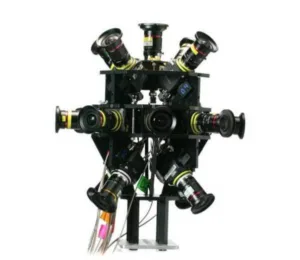Virtual reality is often seen as a technology that fits perfectly to gaming, video consumption and some professional applications in the visualization and training markets. Although there is a market for professional applications, the overall success of the technology rests with the acceptance by the consumer. Even with success in the gaming market, the overall device sales numbers may not be large enough to foster widespread hardware and software development, which is still needed to improve the overall experience for the user.

This creates somewhat of a “chicken & egg” dilemma. Without enough sales, further technology development may not happen and without further technology development, widespread adoption will be questionable. Isn’t that always the issue with new product introductions?
So far, many device makers of virtual reality devices and for that matter also for augmented reality devices have chosen to provide a really low cost solution by offering a ‘cardboard’ device using the user’s smartphone with some virtual reality content. While this does create some interest in the beginning, it is more of an appetizer than the full virtual reality experience.
Another area that is trying to create some consumer interest is the use of 360 degree video cameras that allow the user, or the professional content creator for that matter, to create 360 degree content that makes virtual reality “come to life”. Just imagine taking some video of the latest family gathering. No reason to get everyone assembled in front of the camera, just start recording and everyone in the sight of the camera will be in the picture.
While these consumer grade cameras have been around for a while now, professional solutions are a little bit more complex. For example recording FHD or even UHD / 4K content streams is not a big deal, but if you distribute 1920 or even 3840 pixels over 360 degrees, the final image will get pretty fuzzy. Nevertheless, this can be compared to the beginning of home movies on an 8mm camera. The technology could just become a new form of creating memories.
Now for the professional user there is no reason to stop with FHD or UHD imagery, when cameras are so cheap that you can just use more than one. One? How about 17?
Source: Radiant Images
As you can see, high end 360 degree video requires a lot of pixels with the corresponding storage and connection bandwidth requirements. So far this does not look like something the private user will be able or willing to cope with, any time soon. Of course this is a professional solution, which can be rented from Radiant Images as well as other companies.
Radiant Images also offers solutions based on multiple GoPros that lack of course any genlock feature, but with much lower storage and connectivity requirements as well as a much lower price point.
At the low end, some suppliers offer lower resolution solutions such as the Ricoh Theta or the Giroptic 360 Cam, etc. There is also a new entrant, LucidCam that combines a stereoscopic camera with a 180 degree field of view. Combining two cameras will give you a 360 degree stereoscopic view of the surrounding, which would best be viewed with a VR headset of course.
From the display point of view, watching such content will require a form of virtual reality player. Even if one does not go for the VR headset, a controller would allow the consumer to scan the virtual content one view at a time. This is not so different from most video games today; you can explore a whole world by using the controller.
While it is not clear if the average consumer will jump into this new experience, if enough early adopters are willing to take the plunge, we have the start of a new product life cycle ahead of us. If it will ever make it “over the chasm”, depends on many things, Price and performance certainly make the top of the list. (NH)

